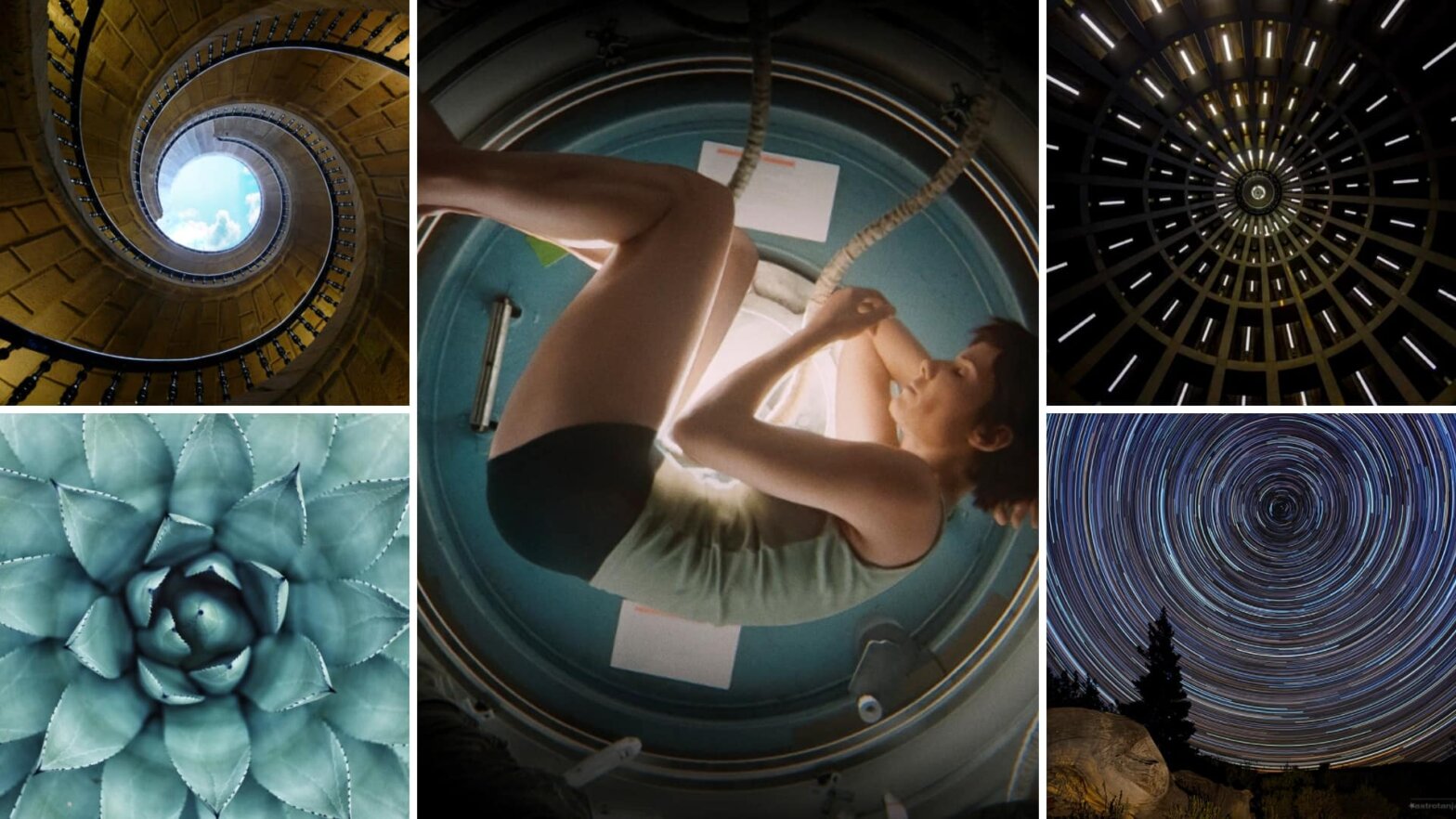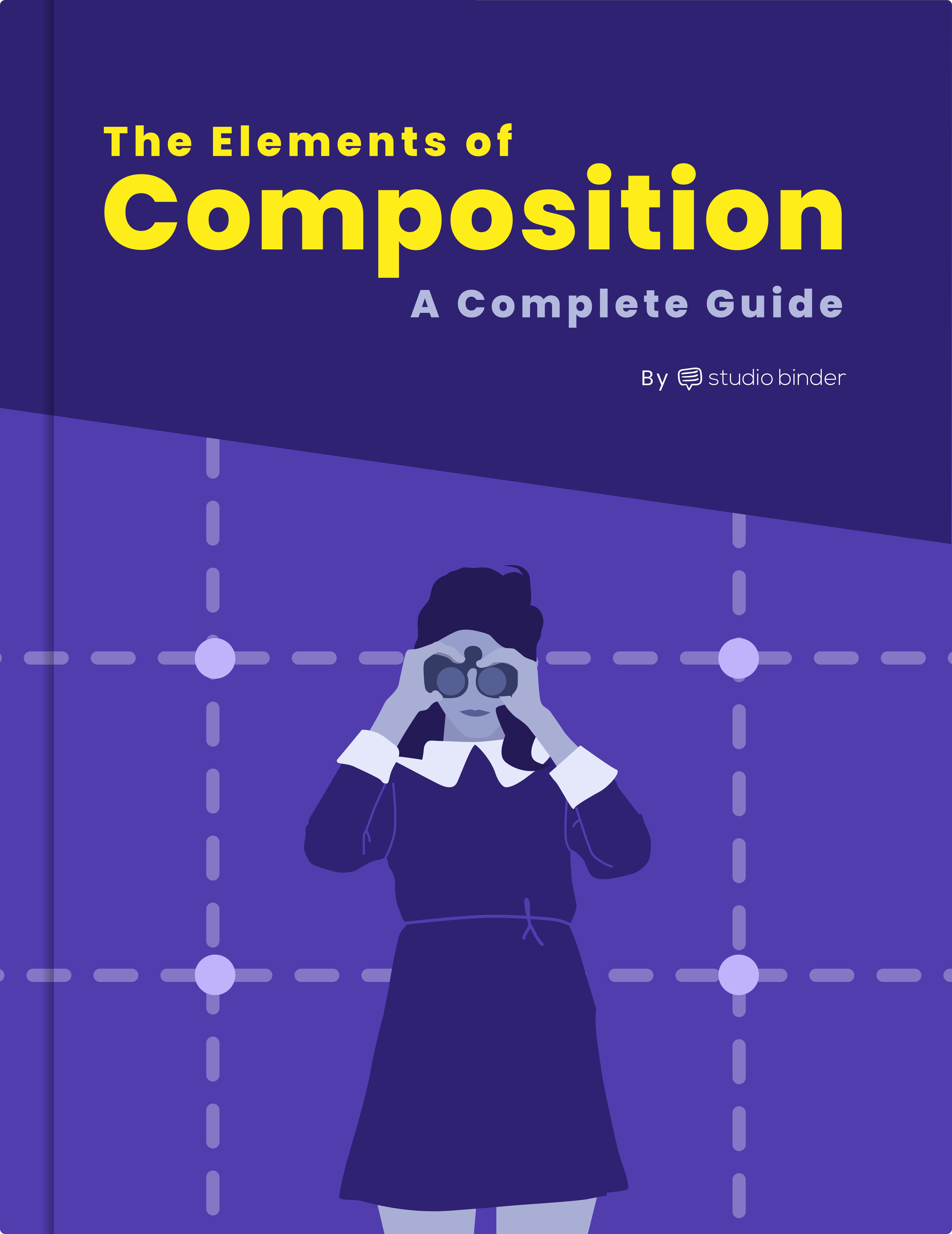The shape of a circle is perhaps the shape that humans have been drawn to the most throughout history. It’s endless nature, often symbolic meaning, has been a useful subject in different forms of art. One of the best ways to create the circle in any form of art is through radial balance.
Radial balance is a less known type of balance than symmetrical and asymmetrical balance, but its use can be found throughout history. Let’s take a look at radial balance throughout to learn more about its effects in composition.
What is Radial Balance in Art and Composition?
First, let’s define radial balance in art
Radial balance is a very specific type of compositional balance that is easy to spot, but can be difficult to define. Let’s take a look at the radial balance definition to learn more about its characteristics.
RADIAL BALANCE DEFINITION
What is radial balance?
Radial balance is the arrangement of visual elements around a central point. Radial balance is often a type of symmetrical balance that is circular in nature as visual elements radiate from a central point. As the visual elements radiate, they form an orderly pattern in an image that can add depth, evoke a sense of movement, and create a point of focus in an image.
What is radial balance in art used for?
- Creating a central point of focus
- Evoking a sense of movement
- Building visual harmony
For a deep dive into all the elements of composition, download our FREE Ebook: Elements of Composition in Art, Photography & Film.
Free downloadable bonus
FREE Download
The Complete Guide to Composition Elements
When you master composition, you master the ability to tell a story, create a mood or deliver a message in a single image. Download our FREE e-book that covers the various elements of composition and the relevant techniques you can use to arrange, and compose the perfect image.
What is Radial Balance in Art Used For?
Build visual harmony
Radial balance is characterized by the visual elements that radiate in equal distance and pattern from a center point. The shape that results from this is almost always a circle.
Throughout religions and cultures, the circle is a common symbol for totality and wholeness. The shape has no beginning and end, making it a common symbol for divine beings, the self, and the infinite.
Within Hinduism and Buddhism, the shape of a circle is combined with radial balance to create a mandala.
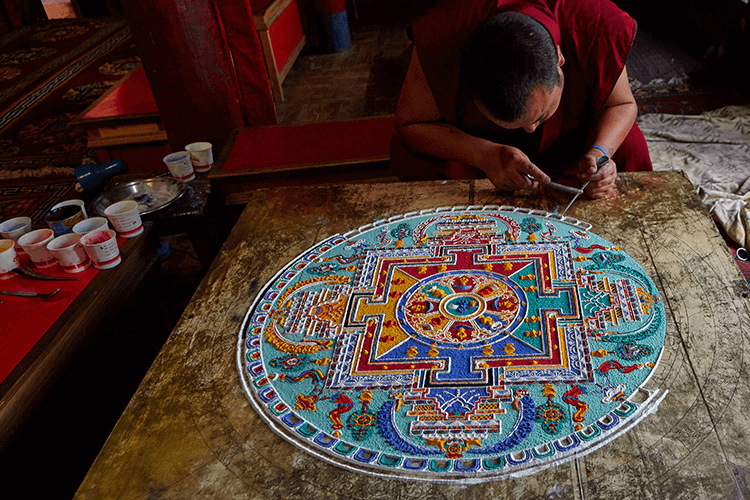
Painting of a mandala • Radial balance design
Mandalas have been created by numerous artists in using different shapes, symbols, colors and medium for different purposes, often prayer and mediation. Most of them, however, utilize a circular shape and radial balance to create visual harmony.
The balance in visual elements from a center point then becomes a symbol of order and perfection. This is why many create and see mandalas as a visual representation of a harmonious universe.
Related Posts
Balance Radial Design in Art Functions
Add visual direction
Beyond the use of art in spirituality, radial balance is also used in the world of abstract expressionism. Most abstract work contains shapes and visual elements that cannot be defined.
In creating abstract work, artists often aim to bring their work to life despite their lack of connection to realistic qualities. Radial balance is a great tool for achieving this. Why? It is effective at creating visual direction.
Visual direction is the movement the viewer thinks a composition would move if it were given the opportunity to move. The circular nature of radial balance can add a rippling or spiraling visual direction to a composition.
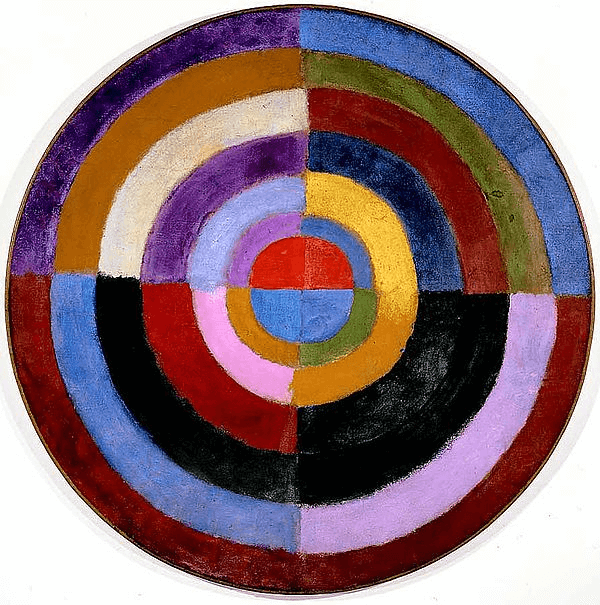
Robert Delaunay, 1912–13, Le Premier Disque • Radial symmetry art
This abstract work above by Robert Delaunay titled Le Premier Disque utilizes varying colors with radial balance to create visual direction of the eye around the canvas. The visual direction the radial balance adds makes the piece more engaging for a viewer.
This effect of radial balance is not limited to the medium of paint. Photographers have found ways to utilize long exposure to create radial balance photography from the light emitting from stars as the Earth rotates.
The result is an image that captures the visual direction of the Earth’s rotational movement in space.

Long exposure night photography • radial balance photography
This effect is achieved by using long shutter speeds often with a large aperture. It’s a great example of how photographers manipulate the exposure triangle to achieve specific compositional elements such as radial balance.
What is Radial Balance in Art Used For?
Create a point of focus
Radial balance can guide the eye in a circular direction like in the examples above. Most of the time, our eyes still end up looking toward the center of the circle. Why?
Radial balance is defined by its use of visual elements that radiate from a central point. Because of this, it is a great way to create a point of focus in a composition.
In Alfonso Cuarón’s 2013 film Gravity, radial balance is used by composing the main character in the middle of a circular doorway of a spaceship.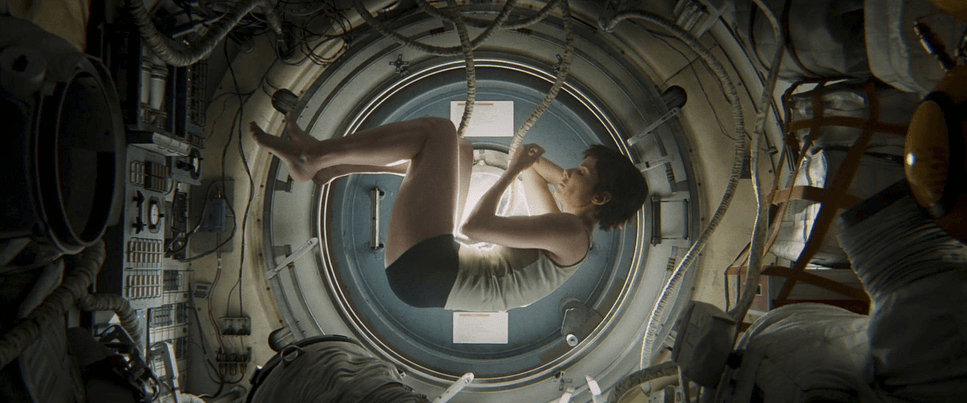
Gravity • radial balance photography
The radial balance of the circular door and mechanical parts of the ship create a point of focus in the center. Cuarón brilliantly places the subject in this point of focus, making us more aware of shot's symbolism for a human life within a womb.
The patterns that create radial balance draw the eye toward the point it radiates from. While symmetrical balance can also create a point of focus, radial balance can even be more effective at drawing the eye directly toward a central point of interest.
Related Posts
Radial Symmetry Art Guide
How to create radial balance
There are a few elements that go into creating radial balance depending on the medium you are creating with. Let’s take a look at a few fundamental components of radial balance to consider when creating it.
Choice of subject
In photography, there are many circular patterns to be found that are naturally occurring. However, some of the best compositions will not be so obvious.
Remember that when creating radial balance, try approaching a subject from different angles. You may find an alternative angle that will best create this type of balance.

Alan Schaller • Radial balance art examples
Staging
The ability to stage your visual elements will depend on the medium you are composing with. If you are able to stage your subjects, make sure you take advantage of it and stage them in a radial pattern that will make our next step much easier.
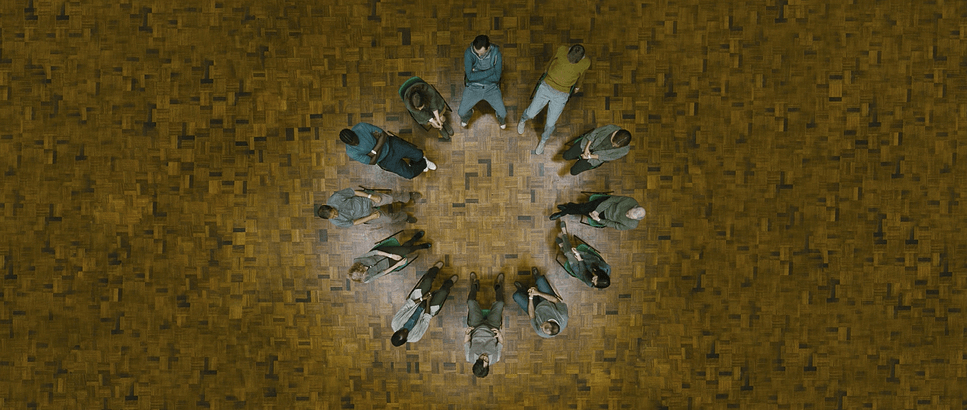
Edgar Wright’s The World’s End • Radial balance design
While painting and cinema often gives you the ability to stage the visual elements of your composition, photography does not always have this luxury. Luckily, you can still achieve radial balance with the next tip.
Precise Composition
It is important to be precise with how you frame the circular pattern that you are shooting. Where the center of the circle lands will become the point of focus in your composition.
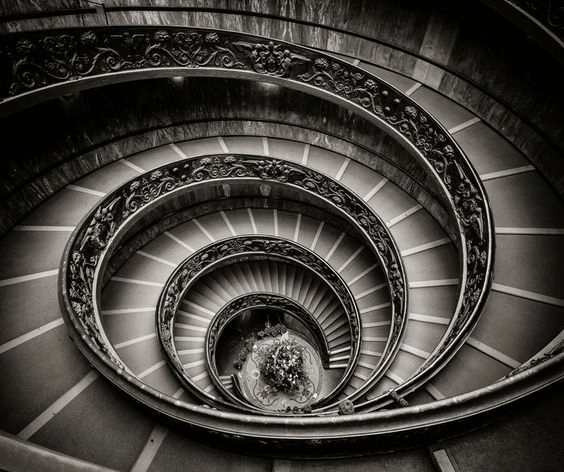
Radial symmetry art example
If you are unable to stage your scene, composition becomes more important. Find unique ways to move and position the camera to achieve the radial balance. This may mean you need to get incredibly low, shoot overhead, or from far away. Experiment and find the angle.
Up Next
What is Symmetrical Balance?
Like we mentioned above, radial balance often appears in works of art as a type of symmetrical balance. If you plan to use either, learn more about symmetrical balance in our next article where we analyze the effects, pros and cons of the compositional technique.
Up Next: Symmetrical Balance →
Showcase your vision with elegant shot lists and storyboards.
Create robust and customizable shot lists. Upload images to make storyboards and slideshows.
